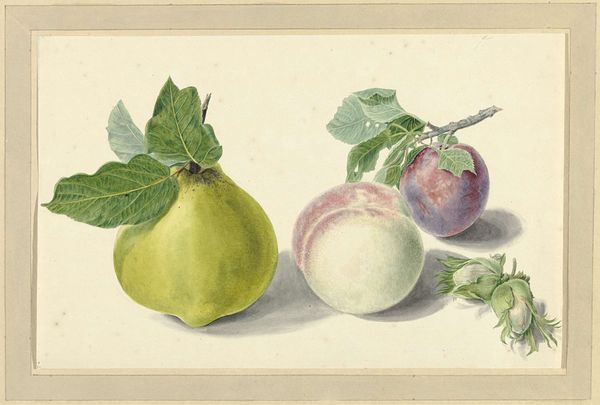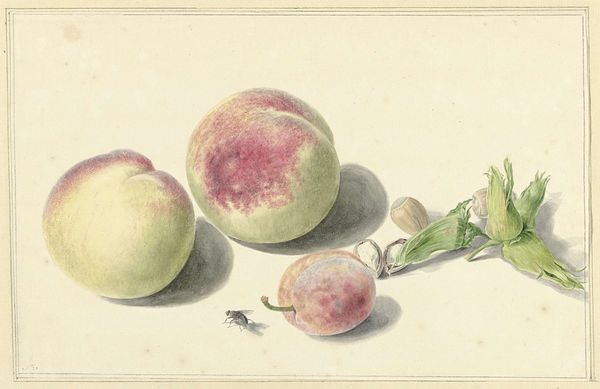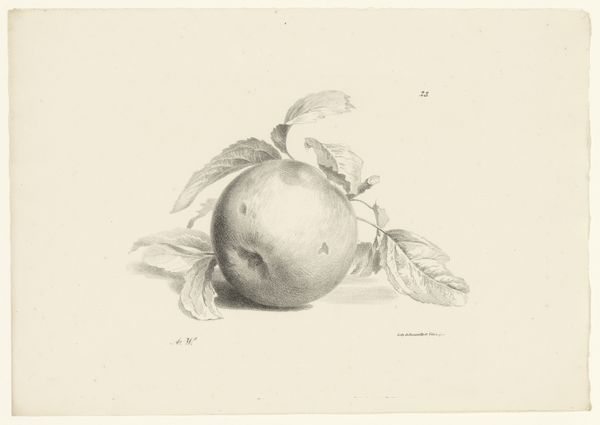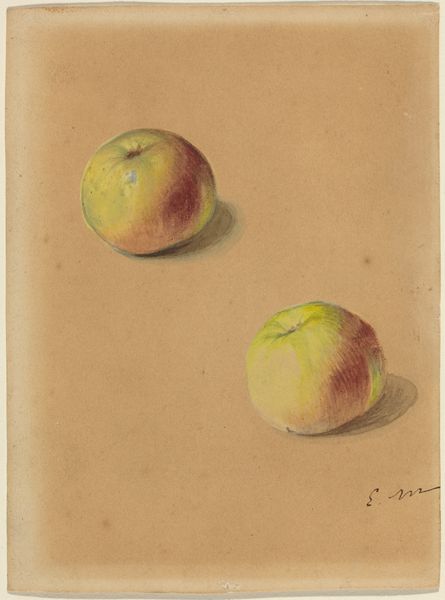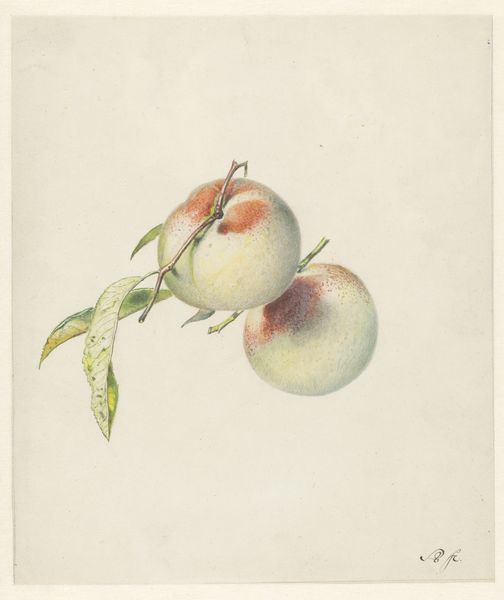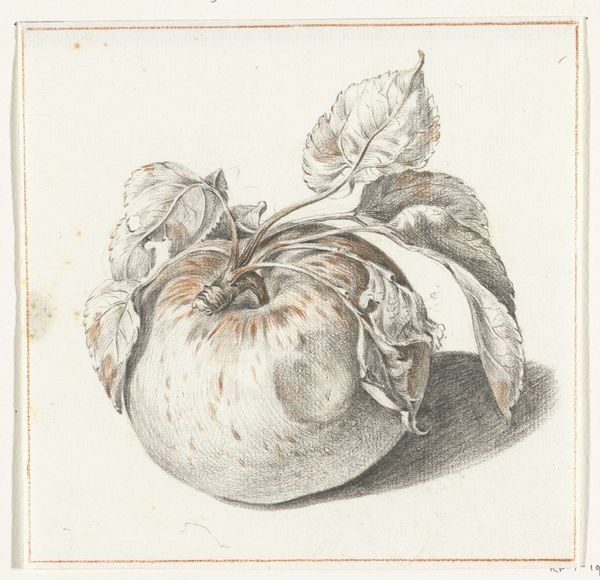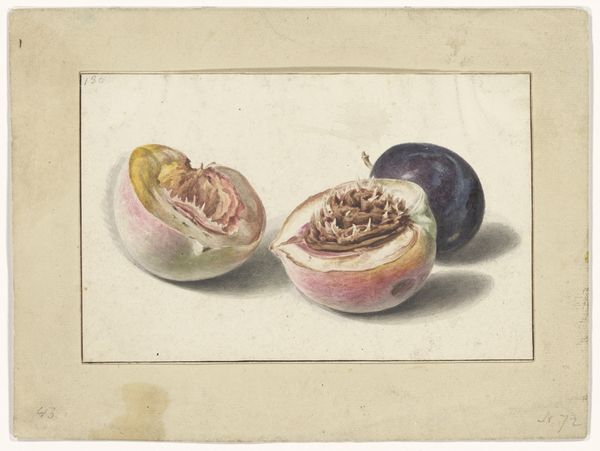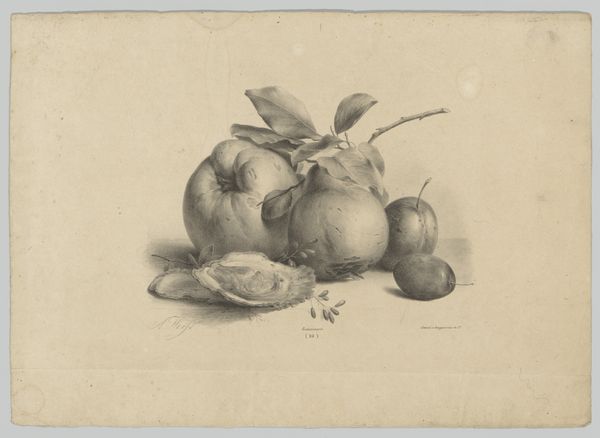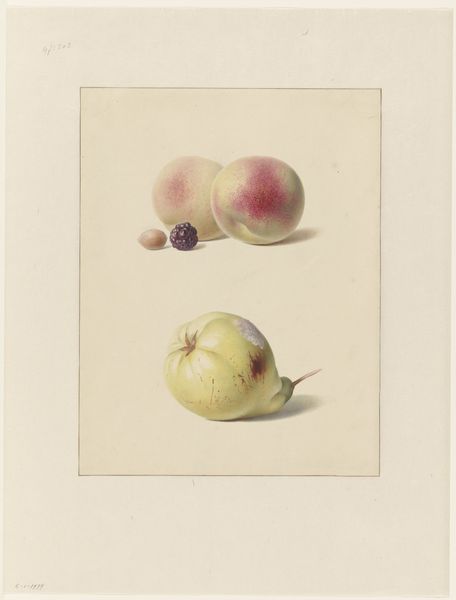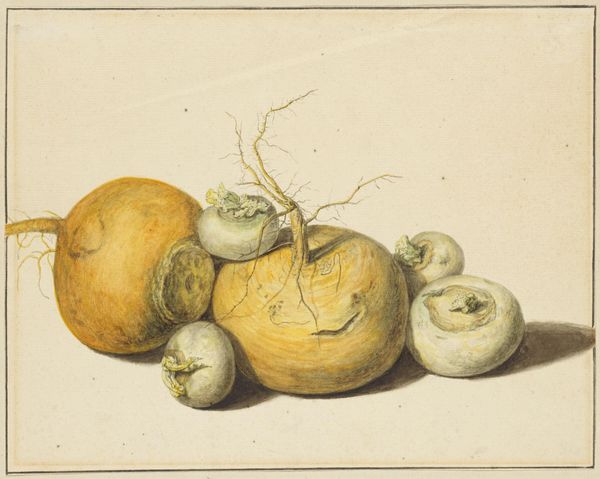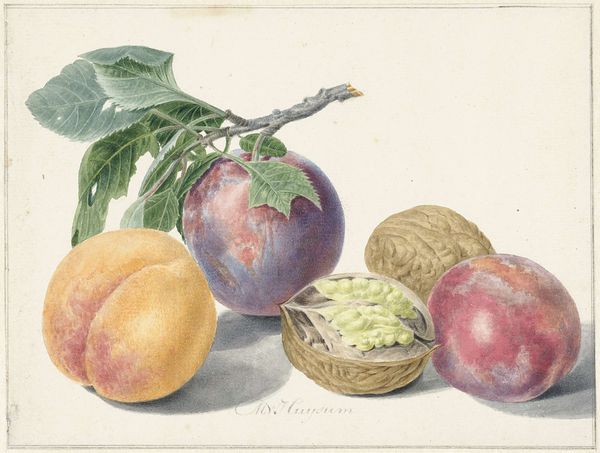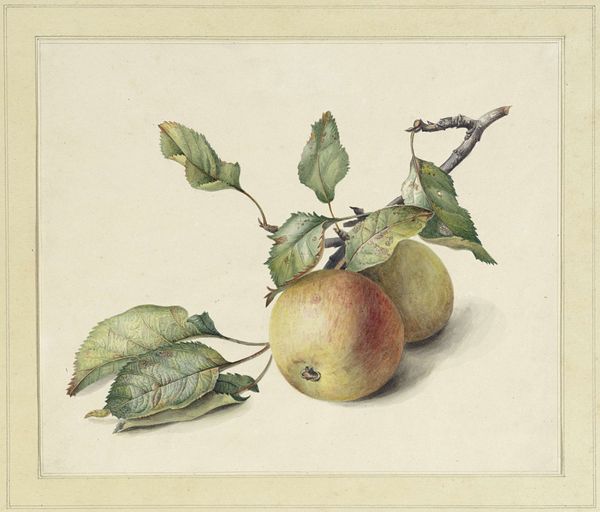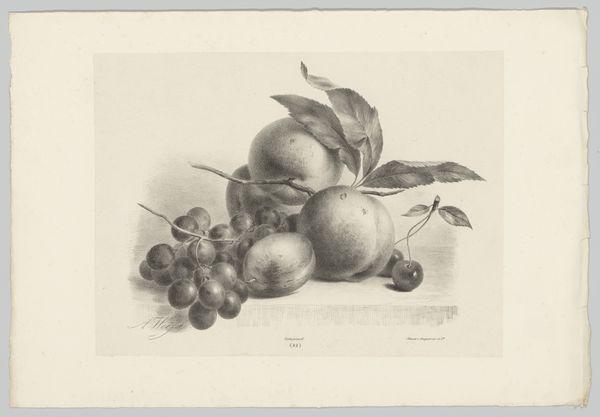
drawing, plein-air, watercolor
#
drawing
#
plein-air
#
watercolor
#
coloured pencil
#
romanticism
#
watercolor
Dimensions: height 101 mm, width 135 mm
Copyright: Rijks Museum: Open Domain
Editor: Ah, here we have "Peach on Two Leaves" by Pieter van der Meulen, created around 1803. It's a delicate watercolour and drawing, currently residing in the Rijksmuseum collection. Curator: My first thought? Serenity. It’s quiet, unassuming, almost shy. The peach looks so vulnerable, nestled there on the leaves. Editor: Indeed. Still lifes in the Romantic era often carried symbolic weight. The peach, with its soft skin and juicy flesh, could represent fragility and sensuality. But what's striking here is how democratized still life became; rather than opulent displays, this suggests more intimate and modest domestic spaces. Curator: I get the intimacy, definitely. The colors are so soft and muted. And you can almost feel the fuzz on the peach, that impermanent bloom. You can really tell that the artist observed it, felt it, and the leaves especially have an almost melancholic beauty about them, like time's gentle touch. Editor: It’s interesting that you focus on the texture. Considering Van der Meulen's larger output, which often engaged in topographical works celebrating the Dutch landscape, "Peach on Two Leaves" hints at the artistic value afforded to observing humble specimens from the local world. Watercolors allowed artists to work on site, *en plein air*, quickly capturing color and light. Curator: That makes sense – I’m now picturing him perched outside, finding beauty in his surroundings and the ordinary peach transforms into something extraordinary on paper. This also reminds us about slowing down, noticing the small, delicate miracles of life that usually goes unobserved. A peach and a few leaves aren’t so boring when you look closer. Editor: Precisely, which is further emphasized when you consider the piece in its historical context: The painting underscores an important dimension of Romanticism—seeking the divine in nature rather than in conventional religious spaces or subjects. What do you take away from it personally? Curator: Hmm…for me, it is about finding perfection in the imperfect, cherishing the simple things. It prompts me to bring beauty to light and appreciate where beauty can be found in unassuming corners of my life. What are your last thoughts on it? Editor: I am inclined to regard this little work of art as the rise of democratic sensibilities regarding art and visual imagery; the accessibility and relative inexpensiveness of paper allowed new, modern audiences to ponder imagery they saw themselves represented in, marking a seismic shift in what we call art.
Comments
No comments
Be the first to comment and join the conversation on the ultimate creative platform.
